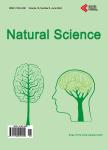Spatial and temporal distribution of the gastropod Heleobia australis in an eutrophic estuarine system suggests a metapopulation dynamics
Spatial and temporal distribution of the gastropod Heleobia australis in an eutrophic estuarine system suggests a metapopulation dynamics作者机构:不详
出 版 物:《Natural Science》 (自然科学期刊(英文))
年 卷 期:2010年第2卷第8期
页 面:860-867页
学科分类:1002[医学-临床医学] 100214[医学-肿瘤学] 10[医学]
主 题:Metapopulation Benthic Macrofauna Population Dynamics Heleobia Australis Guanabara Bay
摘 要:Hydrobiidae is one of the most diverse taxa among limnic and estuarine mollusks. Patterns of spatial and seasonal distribution of Heleobia australis were studied in ten stations over two years, in the urban eutrophic bay of Guanabara, Rio de Janeiro, Brazil. Spatial dispersal strategies in adults of this species, analyzed in the laboratory, revealed three patterns: 1) mobility on soft sediments;2) mobility on hard substrata;and 3) the ability to lift from the bottom to the surface, to again sink down. This facilitate species movement from one location to another by surface currents or attached to floating debris. Thus, individuals are able to escape from an impacted area and further re-colonize other patches after recovering from local impacts. The hypothesis of metapopulation dynamics (source– sink) was analyzed. Two stations with high and constant numbers of individuals were grouped and tested as possible ‘sources’. The number of specimens in the remaining stations was highly variable, even with the complete disappearance and posterior highly dense re-occurrence of the mollusk, whereby these were tested as possible ‘sinks’. Results derived from nested ANOVA supported the hypothesis of metapopulation dynamics in the case of H. australis adults, ex-pressed through opportunistic-species domi- nation of a highly impacted estuarine system, such as Guanabara Bay.



